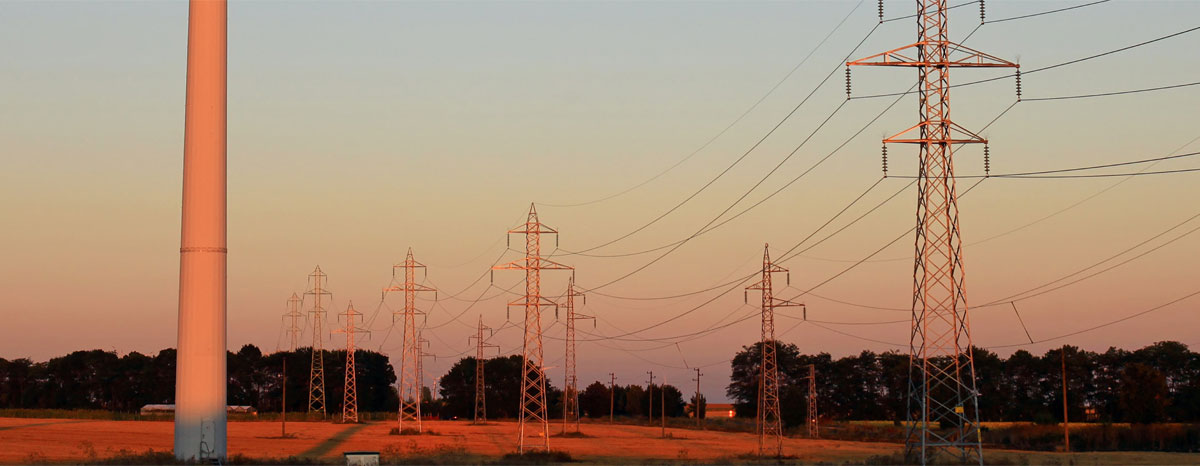
WindTP IP position
WindTP was invented in June 2013 by Professor Seamus Garvey. A UK patent application was filed on June 16, 2013 prior to any disclosure. A PCT application was subsequently filed in Summer 2014 and national phase filings have now been made in Europe, USA, Australia, India and China.
In July 2014, Garvey filed another UK patent application – describing how the Primary Compressor (the machine sitting in the wind turbine nacelle) can be achieved. National applications have been filed in the US and UK.
WindTP potential as a power transmission system for wind turbines
Reports by the Global Wind Energy Council (GWEC) suggest that wind turbine installation in UK/China/The-World will average around 1.5GW/12GW/30GW respectively each year to 2030. With roughly $150K/MW being spent on transmission systems, these markets equate to $0.225bn/$1.8bn/$4.5bn respectively each year. WindTP might reasonably hope to capture 10% of these markets on average in the years from 2017-2032 (e.g. 0% in 2017 rising to 20% in 2032) so that over these 16 years, the total value of conventional transmission systems displaced might be $0.36bn/$2.88bn/$7.2bn respectively.
Present conservative estimates suggest that the actual costs of the WindTP transmissions might be 2.5 times greater than the costs of conventional transmission systems. This suggests that the total value of WindTP transmissions fitted might be $0.9bn/$7.2bn/$18bn respectively in UK/China/The-World.
Recall that the justification for installing WindTP transmissions in preference to conventional arrangements arises from the potential to store energy in an efficient and cost-effective way so the premium expected on the power transmission is easily envisaged.
WindTP potential in the energy storage market
The main motivation for installing WindTP transmissions is to benefit from the low-marginal-cost energy storage facility. If an average of 30GW of wind power is installed globally each year up to 2032 and if an average of 10% of these incorporates WindTP transmissions with 100hrs of storage, the total quantity of storage that will have been installed is ~4.8TWh (30*0.1*16*100). Taking an extremely conservative value of $50/kWh (lower than anything achieved by energy storage provision today), this 4.8TWh of storage capacity represents a net value in terms of energy storage of $240bn by 2032 globally.
This provides a credible assessment of the possible scale of the market that WindTP could address up to 2032.
WindTP synergy with conventional transmission systems
In commercial terms, a “competitor” is some party whose product or service displaces the product or service of some other party. In this sense, WindTP is not a competitor since the net effect of there being more WindTP transmissions installed will that the number of conventional wind turbine transmission systems that can be installed will increase. By the time that WindTP is making substantial market inroads, the deployment of further wind turbines will be limited by the ability of the electricity systems of the world to accommodate them.
WindTP synergy with PV
In many respects, photovoltaic generation is fantastic. Costs ($/MWh generated) are decreasing very rapidly and although these costs remain higher than wind generation at present, they may well come below the costs of wind in due course. One of the main difficulties with PV is its inflexibility – the inability to control its overall generation in any way other than simply discarding the energy generated. Obviously, in an electricity system comprising substantial PV generation and substantial wind generation, the ability to defer electrical energy export from at least some of the wind generation would enable greater amounts of PV to come online.
There is a further aspect in which WindTP assists in enabling greater penetration of PV. PV has no intrinsic “inertia”. Electrical power systems rely heavily on the inertia of spinning synchronous generators to remain stable. WindTP uses synchronous generators directly coupled to the grid (and most conventional wind turbine transmission systems do not). This inertia property of the WindTP generators facilitates the operation of larger amounts of PV than would otherwise be possible.
WindTP and the route to market
- Develop a 60kW demonstrator not using a wind turbine
- Develop a 750kW demonstrator not using a wind turbine
- Implement on an actual wind turbine set at 750kW
- Implement on an actual wind turbine set at 3MW
- Implement a first pilot windfarm using 3MW machines
- Start trading
